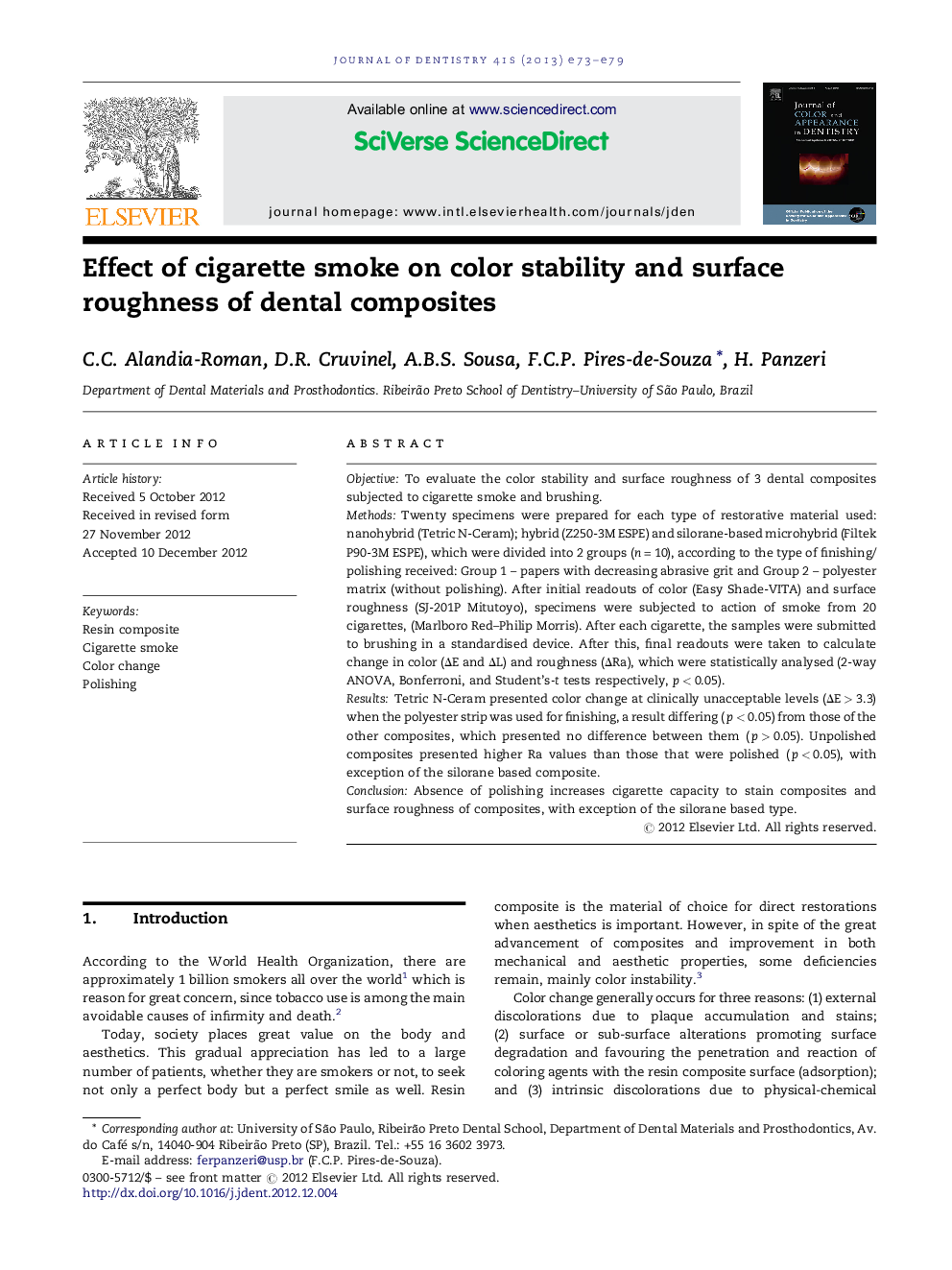| Article ID | Journal | Published Year | Pages | File Type |
|---|---|---|---|---|
| 6053671 | Journal of Dentistry | 2013 | 7 Pages |
ObjectiveTo evaluate the color stability and surface roughness of 3 dental composites subjected to cigarette smoke and brushing.MethodsTwenty specimens were prepared for each type of restorative material used: nanohybrid (Tetric N-Ceram); hybrid (Z250-3M ESPE) and silorane-based microhybrid (Filtek P90-3M ESPE), which were divided into 2 groups (n = 10), according to the type of finishing/polishing received: Group 1 - papers with decreasing abrasive grit and Group 2 - polyester matrix (without polishing). After initial readouts of color (Easy Shade-VITA) and surface roughness (SJ-201P Mitutoyo), specimens were subjected to action of smoke from 20 cigarettes, (Marlboro Red-Philip Morris). After each cigarette, the samples were submitted to brushing in a standardised device. After this, final readouts were taken to calculate change in color (ÎE and ÎL) and roughness (ÎRa), which were statistically analysed (2-way ANOVA, Bonferroni, and Student's-t tests respectively, p < 0.05).ResultsTetric N-Ceram presented color change at clinically unacceptable levels (ÎE > 3.3) when the polyester strip was used for finishing, a result differing (p < 0.05) from those of the other composites, which presented no difference between them (p > 0.05). Unpolished composites presented higher Ra values than those that were polished (p < 0.05), with exception of the silorane based composite.ConclusionAbsence of polishing increases cigarette capacity to stain composites and surface roughness of composites, with exception of the silorane based type.
